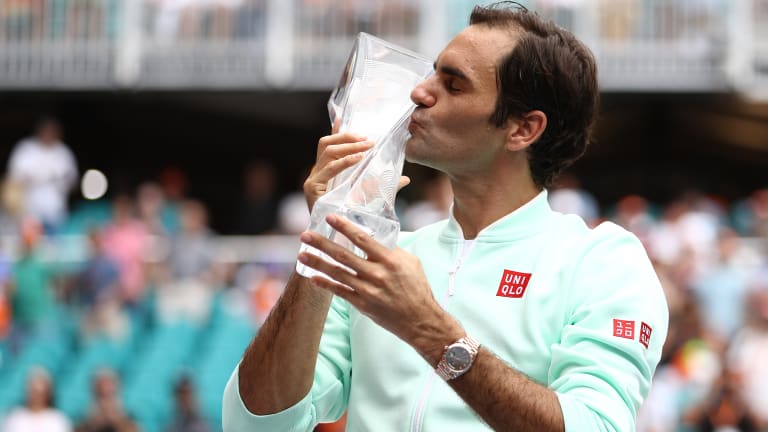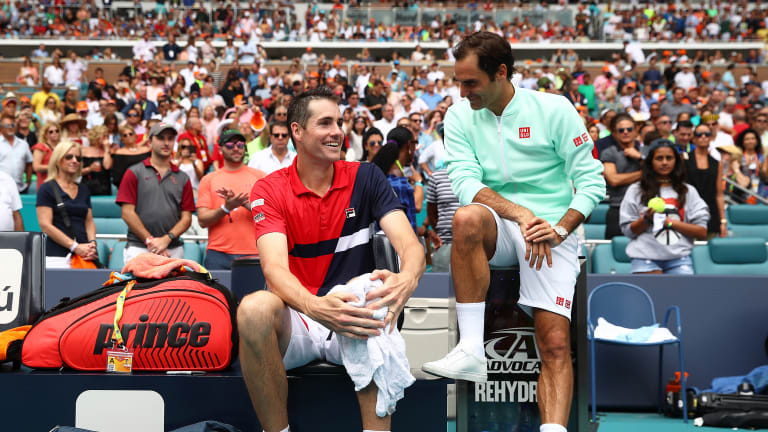Miami, USA
Federer 101: Roger’s latest title run in Miami was parts labor, love
By Mar 31, 2019Miami, USA
Jannik Sinner tops Grigor Dimitrov for Miami Open title
By Mar 31, 2024Miami, USA
Danielle Collins won an emotional title, while Jannik Sinner won a logical one, at the Miami Open
By Mar 31, 2024Miami, USA
Danielle Collins wins Miami Open on her final try, topping Elena Rybakina in straight sets
By Mar 30, 2024Miami, USA
Danielle Collins defeats Elena Rybakina for Miami Open title, the biggest title of her career
By Mar 30, 2024Miami, USA
What will be stronger in Miami: Jannik Sinner's rise, or Grigor Dimitrov's renaissance?
By Mar 30, 2024Miami, USA
Jannik Sinner, Grigor Dimitrov advance to Miami Open final
By Mar 30, 2024Miami, USA
Who Will Win: Jannik Sinner or Grigor Dimitrov, 2024 Miami Open men's final
By Mar 30, 2024Miami, USA
Who Will Win: Danielle Collins or Elena Rybakina, 2024 Miami Open women's final
By Mar 29, 2024Miami, USA
2024 Miami Open women's final preview: Elena Rybakina vs. Danielle Collins is always 'neck and neck'
By Mar 29, 2024Miami, USA
Federer 101: Roger’s latest title run in Miami was parts labor, love
The 37-year-old Swiss read the big man’s serves, he read his forehands, he read which way he was going to lean at the net.
Published Mar 31, 2019
Advertising

Federer 101: Roger’s latest title run in Miami was parts labor, love
© Getty Images
Advertising

Federer 101: Roger’s latest title run in Miami was parts labor, love
© Julian Finney/Getty Images